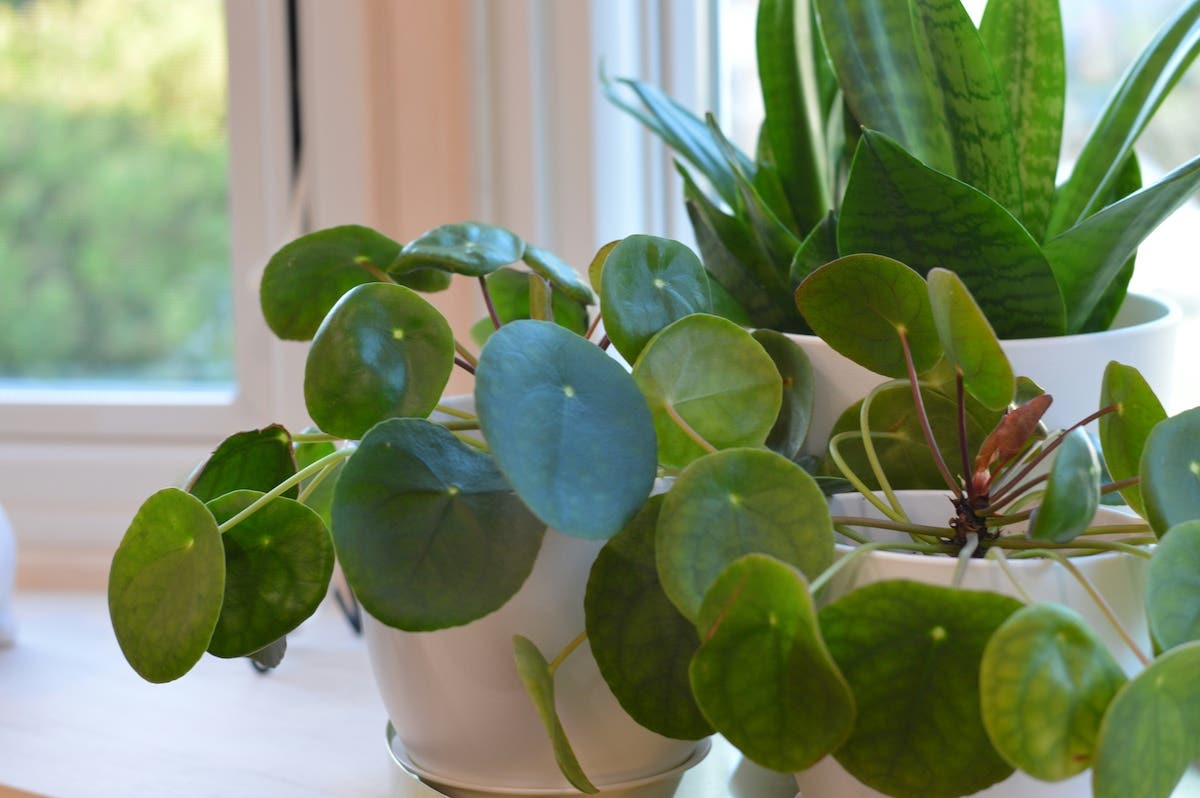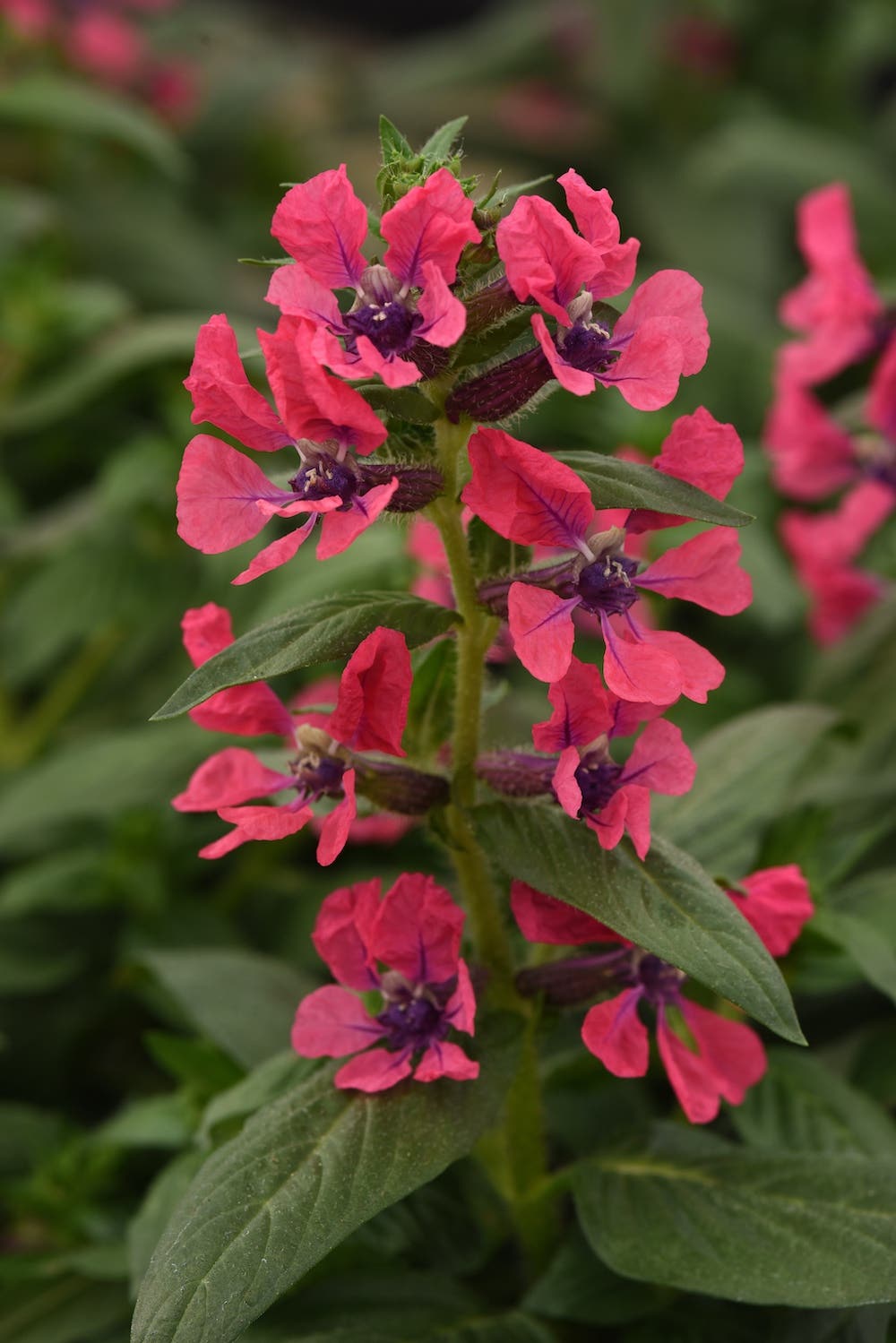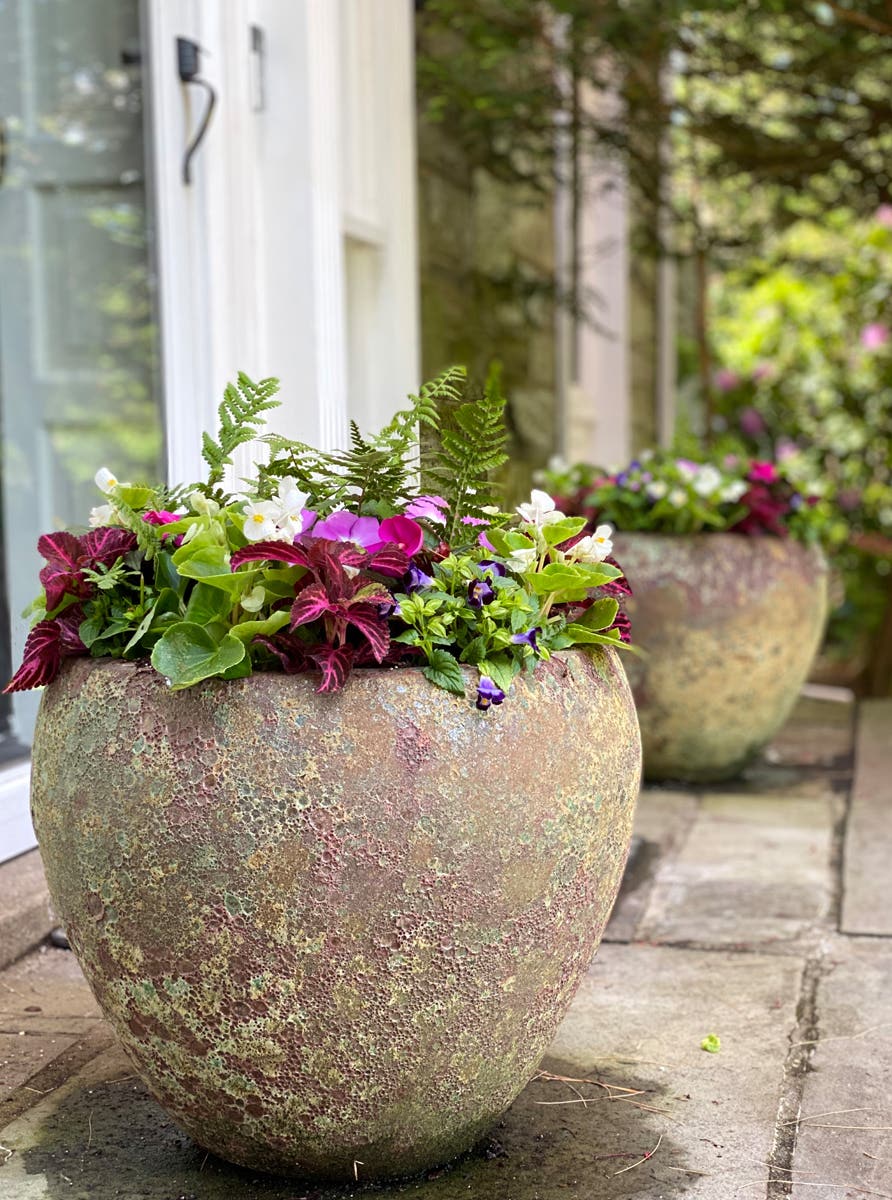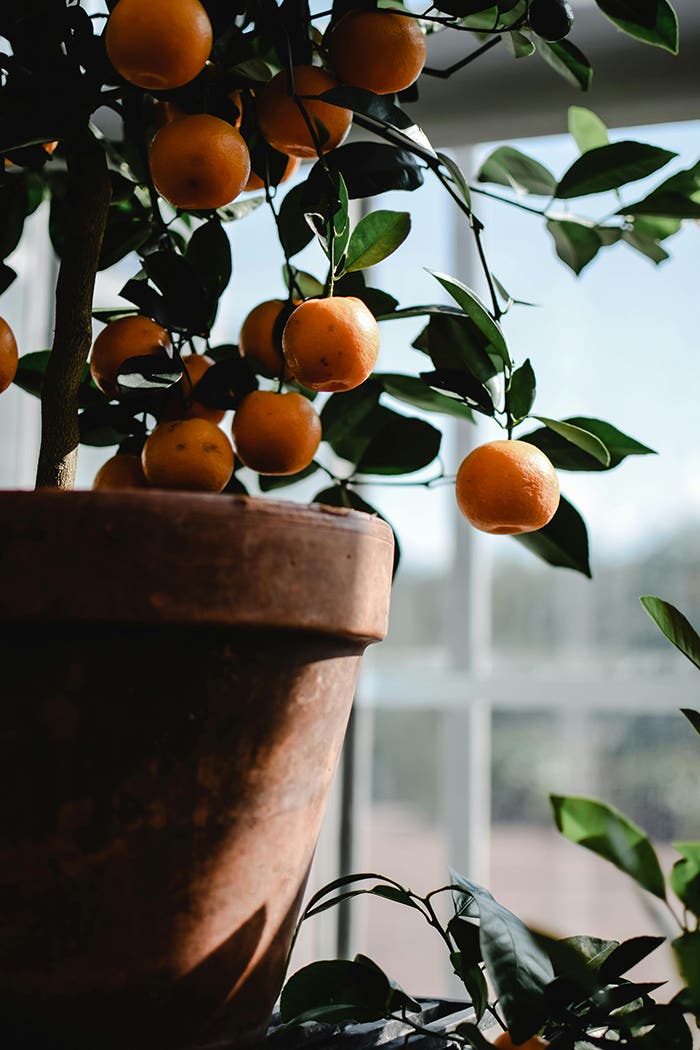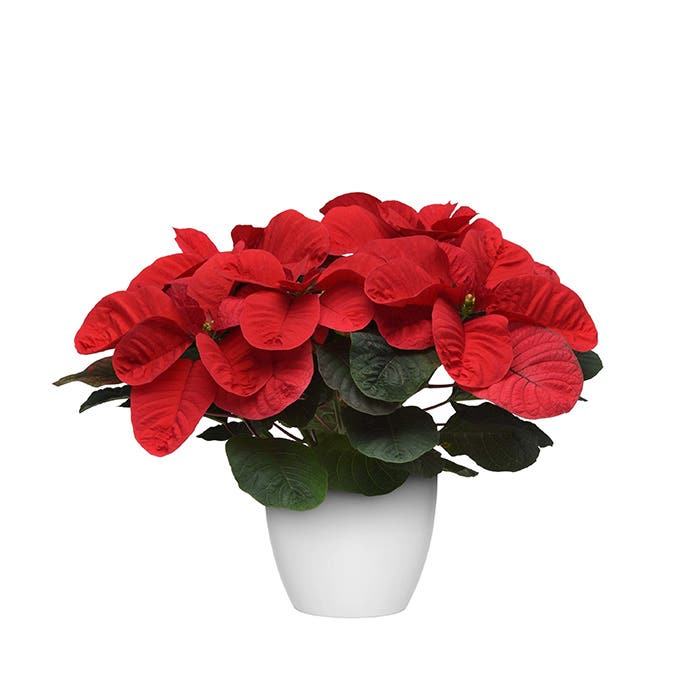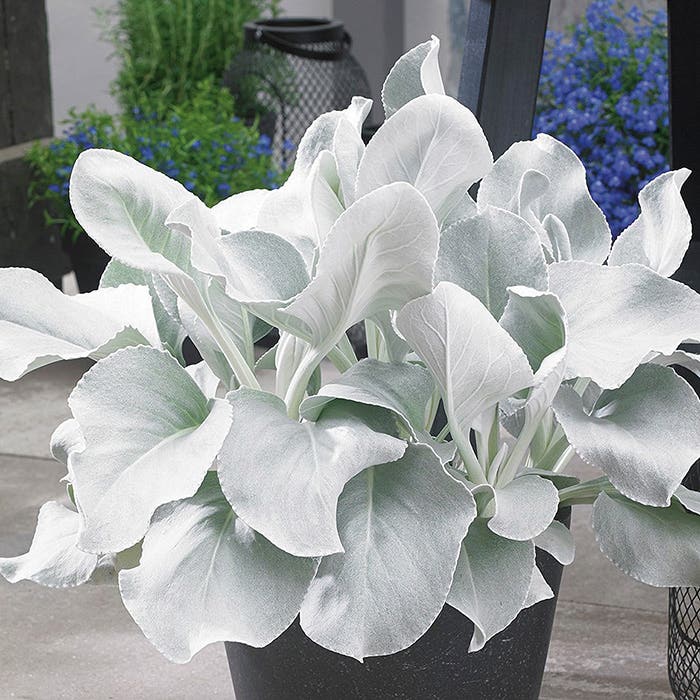To keep plants in hanging baskets healthy and beautiful all summer long, follow these steps:
- Water often and thoroughly. Plants in containers generally need to be watered more often than if they were growing in the ground. This is especially true for hanging baskets because they are subject to drying winds. Reach up and lift the pot from below; if it feels light, it probably needs water. Put your finger one inch into the soil; if it is dry at that depth, water. In most areas you should expect to water hanging plants every day or even twice a day. Water should stream from the drainage holes when you water. Related: Read how to avoid wasting water while watering hanging plants.
- Deadhead blooming plants. As flowers fade and die, remove them by pinching them off where they meet the stem. This promotes the formation of new flowers. Otherwise the plant may put its energy into creating seed.
- In a mixed basket, replace plants as needed. Don’t be afraid to remove a plant from a mixed planting if it has finished blooming or it isn't thriving. Ease it out, being careful of the other plants, and replace it with something else. Alternatively, plug the space with more soil and allow the other plants to fill the gap.
- Fertilize. Because you’ll be watering frequently, nutrients will leave the potting mix quickly. Feed the plants with a liquid fertilizer or a dry slow-release fertilizer (not both). Follow the directions for amount and frequency. Feed only when the soil is moist and never when plants are wilting; otherwise the fertilizer is likely to burn the plants. If the soil is dry, water thoroughly with plain water and come back to feed after a few hours and when the plants are looking perky.
- If necessary, soak. If water streams from the drainage holes but the soil still seems dry, try submerging the pot in a bucket of water for up to an hour. This will thoroughly rewet the soil. Related: Read additional care tips for container plants in general.
- Cut back leggy plants. If the plants start to look straggly, don’t be afraid to cut them back. Most common hanging plants, such as verbena, petunias and impatiens, will produce dense new growth after a haircut.
Related: Found a bird's nest in your hanging plant? Here's what to do.
mgodfreyAuthor
Related Stories


